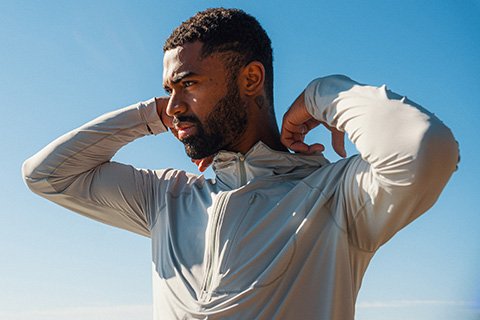
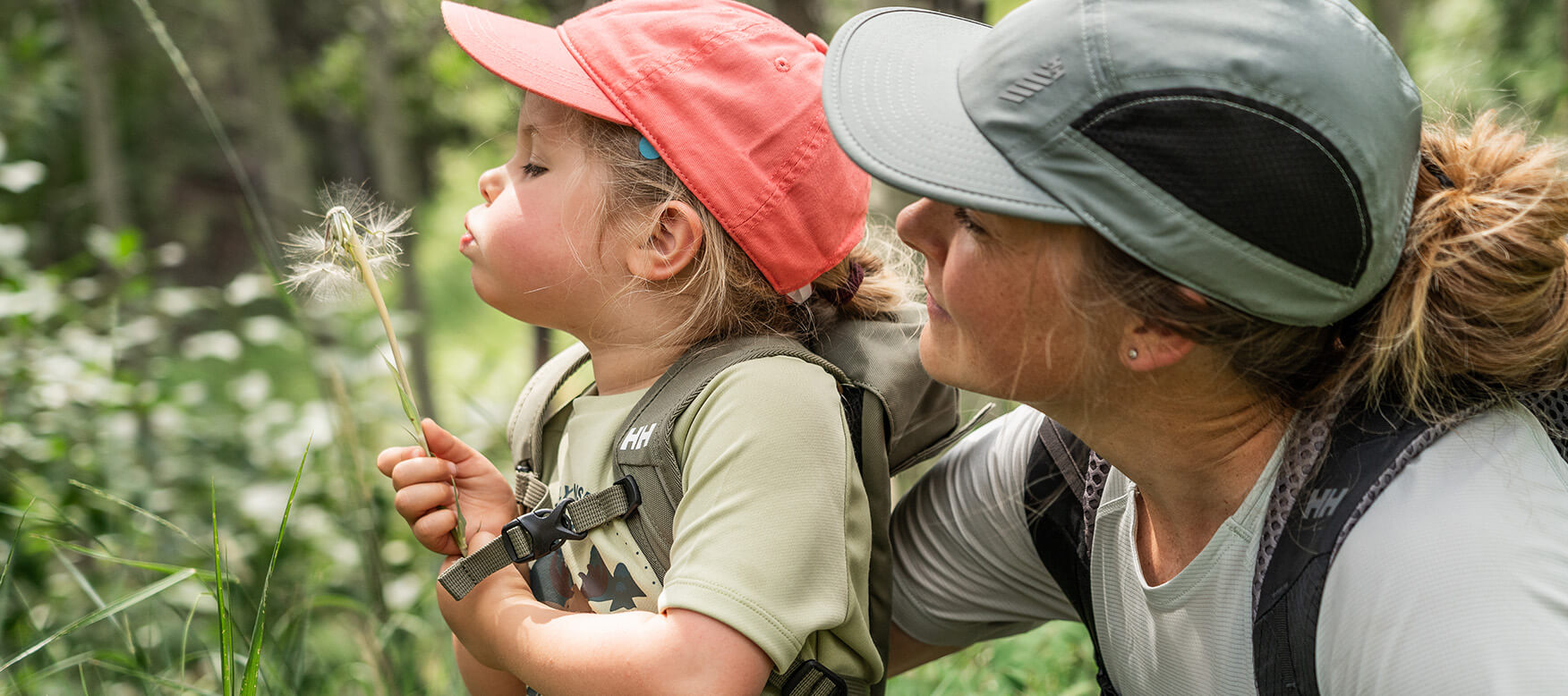
Hiking with kids
June 04, 2025
7 min read
Ever wondered how to turn your little ones into passionate hikers? Helly Hansen ambassadors Kaylin Richardson and Joel Bettner share their insights, from Kaylin's hands-on tips in the video "How to raise a hiker" to Joel’s inspiring story of hiking the Alps with his family of five. Whether you're looking to spark a love for the outdoors or need practical guidance for family adventures, this blog has everything you need to hit the trails with confidence!
From packing the perfect snack to layering like a pro, Helly Hansen ambassador and big mountain skier Kaylin Richardson shares her top tips for hiking with kids. Discover how to spark their love for the outdoors, foster resilience, and create magical moments in nature.
How to hike with kids
Outdoor enthusiast and dad of three, Joel Bettner loves adventure and the satisfaction that his kids get from it. Last summer, he and wife Kelly took their kids, Marilyn (9), Marjorie (7) and Bridger (5), hiking in the Alps. Here he shares their experience and some top tips for hiking with kids.
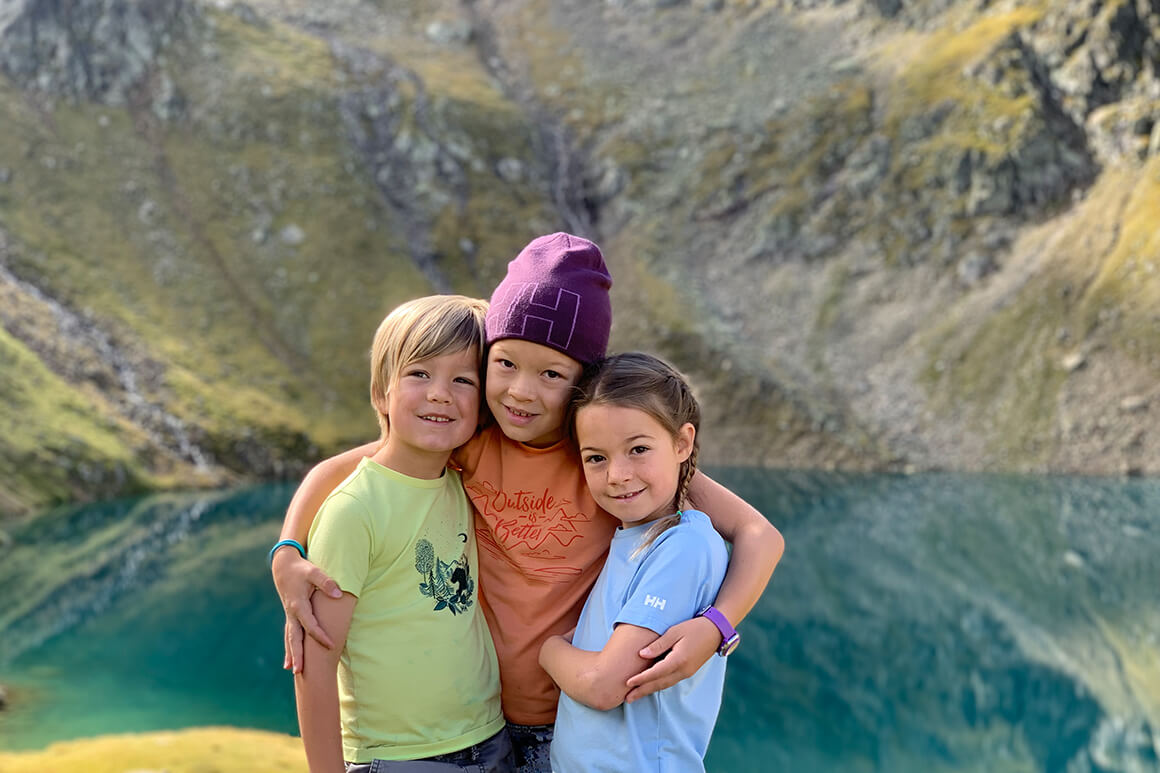
What should kids wear on a hike?
This is very weather dependent but kids, like adults, should dress according to the season. Pretty much all the time they wear sturdy kids' shoes. In the summertime they wear shorts and t-shirts, and maybe carry an extra layer if the weather looks like it will be "iffy". In the spring or fall we do more layering — pants, t-shirts (or a single layer long sleeve shirt), and maybe a hat because the temperature can fluctuate significantly.
If it is cold we put them in moderately warm jackets, but not too warm because we don't want them to sweat a bunch. If it is rainy we use waterproof windbreaker style jackets. You'll get to see the full range of their apparel in the pictures from the backpacking in Austria, because we had the full slate of weather there. Ultimately, simplicity and durability is best.
1. Layers
When we packed for Austria we knew we were going to be hiking in cooler/cold weather. Even though it was the summer, we anticipated precipitation because August is a rainy month in the Alps. So, we packed layers for everything from hot sun to cold rain - and we needed all of it. Staying dry from the rain was super important when it was cold and rainy. It was just as important to stay dry from sweat when it was hot and sunny.
Between the huts on our trip to Austria, we did a lot of changing layers and talking to the kids about the importance of putting layers on during a break even if they weren't cold yet.
2. Change of clothes
We typically only bring a full change of clothes if we are going to be out for multiple days/nights. Even traveling abroad for almost a month in the summer, we all fit everything we were bringing into a single backpack.

3. Hiking boots
Finding good shoes with good traction is super helpful, even at a young age. Kids may like princess/dinosaur shoes in the store, but they don't like them on the trail (even if they refuse to admit it).
For day hiking we mainly pack food and water, maybe one extra layer. Often the kids don't have to wear a pack for a day hike - we can get it all in Mom/Dad's pack. Camping is a much different story.
4. Food and snacks
For day hiking we mainly pack food and water. Often the kids don't have to wear a pack for a day hike - we can get it all in Mom/Dad's pack. Incentivization with sweet treats are very effective at keeping the kids happy and moving even when they're tired. The kids love fruit snacks and chocolate. It is amazing the motivation they'll have to make it "just over this hill" if there is the promise of a chocolate bar there.
5. First aid kit
A first aid kit is important, but the best strategy is to make decisions that reduce the likelihood of needing it. Around our home, the fall and the spring are particularly active times for bears and other wildlife. That is a large concern for us with small children. In the summer the animals are still around, but since the snow has melted at higher elevations, the wildlife is much more dispersed.
How to make hiking fun for kids
We do take our kids on pretty big adventures, which are physically demanding even for adults. We've found that their morale is the most important thing to keep up. This can be a challenge if they start to get really tired, but we've found some good strategies.
Games and activities
Lots of conversation, imagination games (i.e. we're like the Fellowship of the Ring), and incentivization with sweet treats are very effective at keeping the kids happy and moving even when they're tired.
Some activities we do are:
- Nature-spotting: the kids know a lot about wildlife (thanks to PBS Kids shows like Wild Kratz). Bridger is especially adept at spotting a hidden fawn, or bird in the trees. We got to see some Ibex cross our trail in Austria, and the kids loved it.
- Berry-picking: the kids love to pick huckleberries every summer, and we got enough to make a few pies, and eat as snacks this year.
- Identifying flowers: wildflowers are always a treat. Different times of the year provide different wildflower blooms, and the kids are getting pretty good at identifying the flowers under Kelly's tutelage.
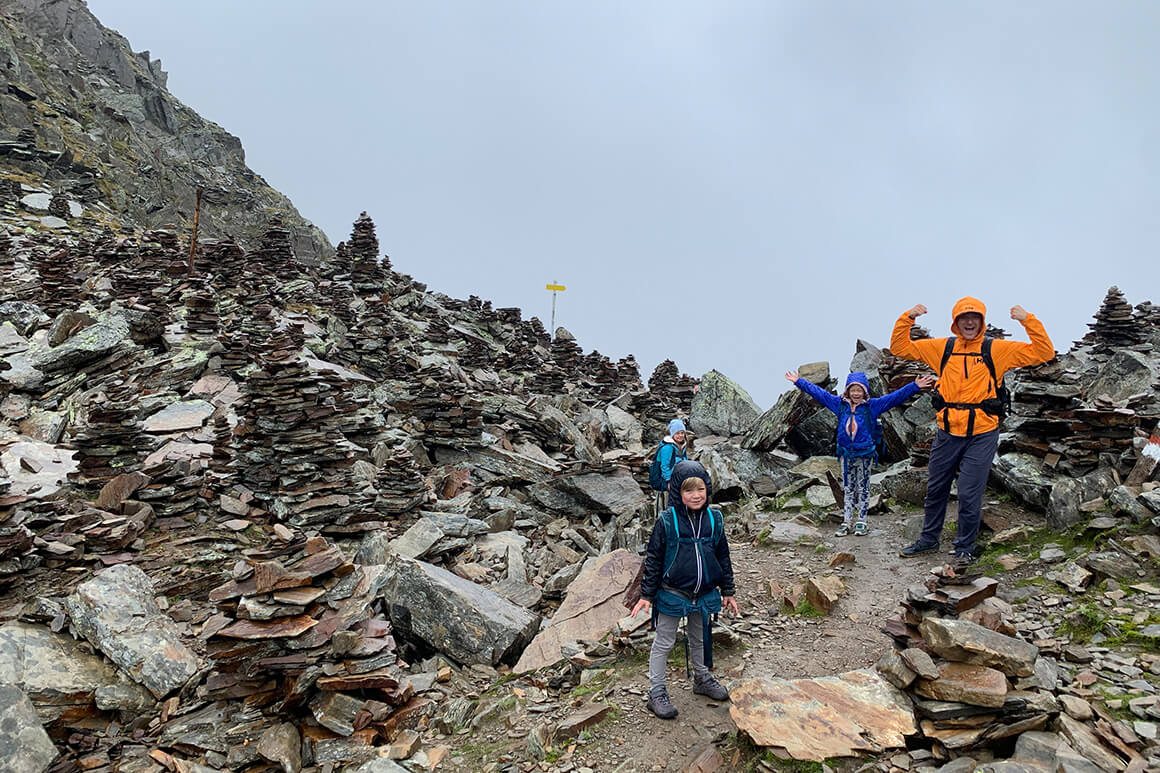
Hiking with kids of different ages
We try to pick hikes that have interesting features (waterfalls, caves, wildflowers, creeks, etc) so that everyone is enjoying the experience even if one member slows the others down. We certainly have had days where the older kids get frustrated that we're moving slowly, but I always remind them that we're a team and we can't move faster than our slowest link.
Top tip: We encourage the faster hikers to climb on rocks and enjoy other features of the trail so they're entertained at a slower pace.
Tips for route planning
Route planning for kids is almost all about where the trail leads. They want to get somewhere cool. It's amazing how they can deal with longer distances and tougher terrain if they know there's a waterfall/lake/hut at the end of the trail! When the kids were little I hardly ever pushed them on the distance - we always turned around when they wanted to.
For our trip to Austria, I looked at the topo maps and found pictures of the trails online. It was difficult to gain a good perspective of what the trail was actually like until we got there. We wanted to do some sections of trail that were challenging, but not so challenging the kids would need a rest day in between.
Top tip: Know your kids’ limits. From the hikes we do around the house, we know the kids can comfortably handle over 700m of climbing and 10k of distance in a day, multiple days in a row. So, I looked for routes that would let us stay in that range between huts and give us interesting terrain.
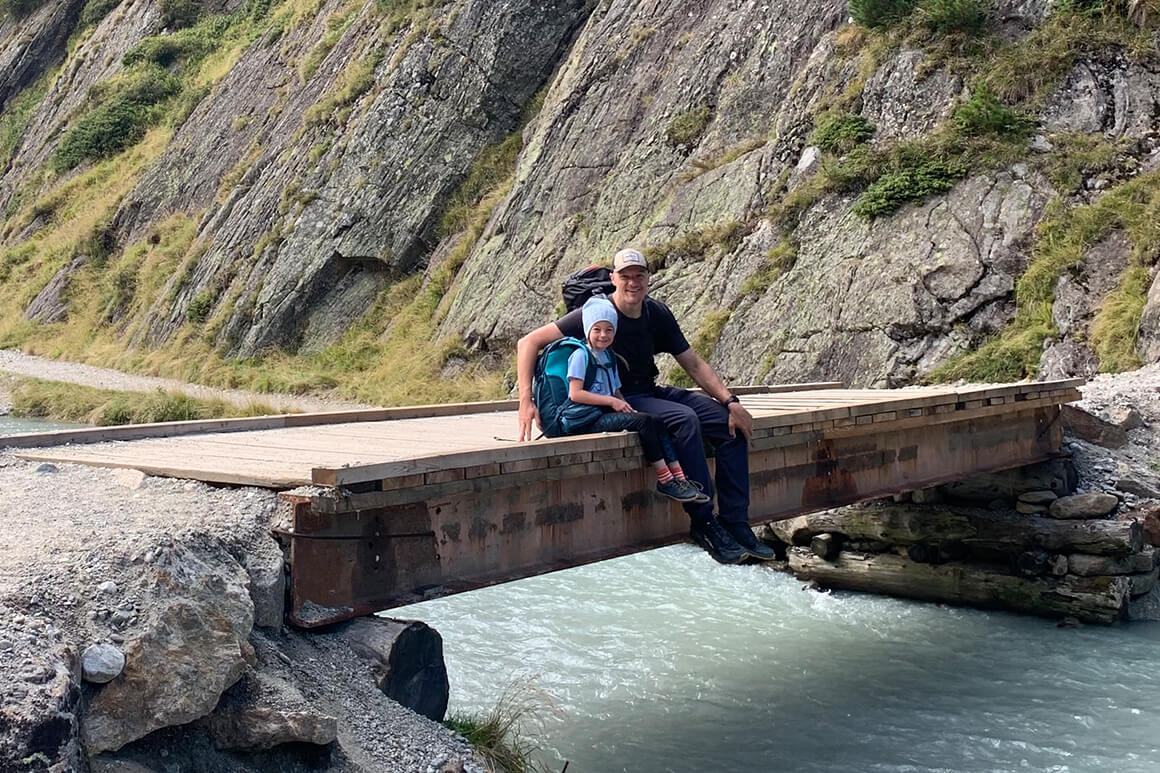
Hiking with babies and toddlers
Early on I remember hiking with the baby in a front pack and the toddler on my back (once she got tired of hiking) — those were fun adventures, but much shorter. Sometimes all the gear prep and the drive to the trailhead and the stop for a snack/picnic would take more time than the actual hiking on the trail. Those experiences made this trip that much more meaningful — it's exciting to see how far they have come and how much we can do together now as a family!
Dressing babies and toddlers for hiking
Before they could walk we dressed them much differently. For those years it was important that we kept the kids extremely warm. But, it was also important that we could change their diapers easily. There were some really nice playsuits that we used, where one of the legs zipped down all the way for fast access for diaper changing. We also had to be careful with hands and feet - lots of mittens and extra socks to make sure those tiny fingers and toes stayed warm!
Baby stroller vs. carrier
Baby carrier for the Bettners. Given where we live, a stroller is rarely practical. There are not any sidewalks. So, as soon as kids got too large for a baby carrier (and sometimes earlier), they started hiking with us. For a while Kelly used a running stroller to take the kids on some of her road runs, but we did a lot more with baby carriers than we did with strollers. With a baby carrier you can still really get out into nature. With a stroller you're much more confined to smooth surfaces.
Top tip: A stroller is great for smooth surface, but a carrier gives more freedom to explore off the beaten track
EXPLORE KIDS' AND JUNIORS' GEAR


May 27, 2025 4 min read
Hiking for beginners
New to hiking? Learn step-by-step how to enjoy the outdoors confidently with these beginner-friendly advice.
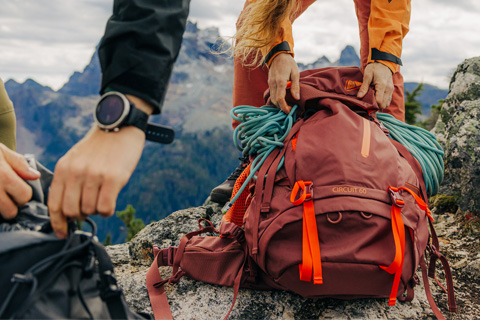
January 30, 2025 2 min read
How to wash a backpack
Learn how to wash your backpack without a washing machine in four easy steps.